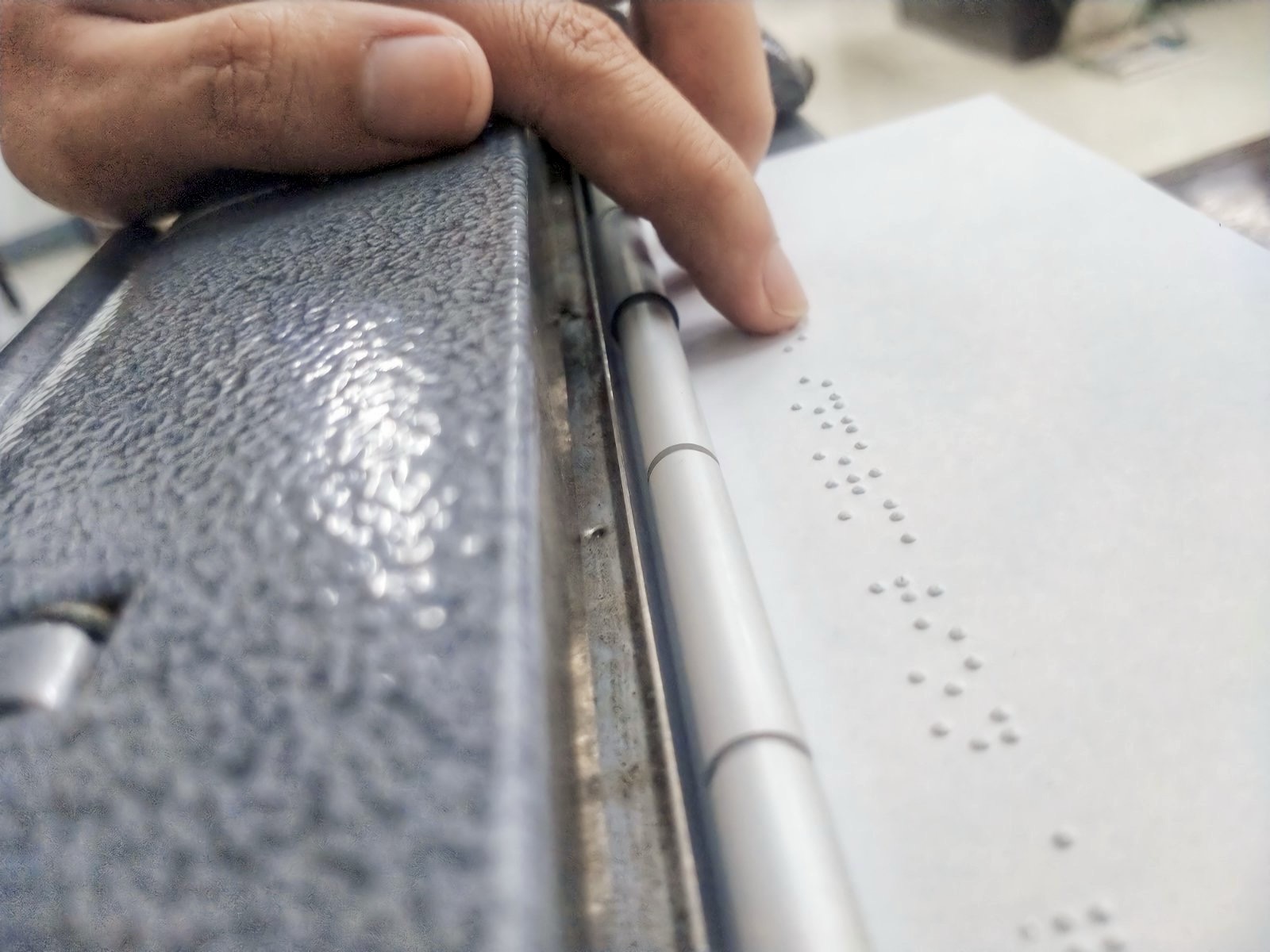
World Braille Day is celebrated every 4th of January to mark the birth of Louis Braille who created the Braille system that enabled the visually-impaired to read.
In General Santos City, the observance of World Braille Day took a practical approach, as the City Mayor's Office, through the Persons with Disability Affairs Office (PDAO), initiated the Braille Literacy caravan, reaching out to various media outlets in the city to underline the significance of Braille literacy and awareness.
PDAO technical staff Leo Martin Cellan emphasized the crucial role of Braille in enabling the blind and visually impaired to navigate the world independently.
"World Braille Day for me, as a visually impaired, is a time for me to appreciate this technology because it is an alternative way of reading and writing, passing information, or coping with the demands of the world, like schooling or employment,” Cellan told the Philippine Information Agency.
Emphasizing the importance of Braille literacy in personal and professional development, Cellan shared inspiring stories of visually impaired professionals that are popular, like lawyers Martsu Ressan Ladia from Alabel, Sarangani Province, and Anthony Mark Emocling from Baguio City, who, through Braille literacy, have achieved remarkable success in their careers by recently passing the 2023 Bar exams.
He noted the reason why the city government, through PDAO and in partnership with the Department of Education (DepEd), has been promoting Braille literacy in different barangays to encourage blind individuals to go to school and learn Braille.
Cellan also urged parents of visually impaired children to view Braille education not just as a necessity but as a powerful tool for self-improvement and empowerment.
“To parents, please choose to give education as a gift or as a blessing to your children, kasi ‘yon yung mga bagay na hindi mananakaw eh [because that's something that can't be stolen]. Mawala man kayo sa mundo, pero ang natutunan ng bata sa Braille [Even if you leave this world, what the child has learned in Braille] would help them live and earn a living despite the obstacles,” he pointed out.
“Braille kasi is a transcription printed into a material that is tactile and can be read by the blind using their fingers,” he explained.

Being an advocate for the advancements in Braille technology, Cellan highlighted tools like the Braille slate and stylus, the typewriter-looking Braille Writer, or simply “Brailler,” Braille Embosser, which is similar to a printer, and modern computer software, which have made Braille more user-friendly and accessible.
According to him, the innovations represent significant strides in providing alternatives to auditory-based or “talk-back” technologies, wherein artificial intelligence (AI) reads the mobile or computer screen.
These practical tools, Cellan further noted, help to broaden the scope of independence for the blind, especially those who do not have gadgets.
“[Actually], pinag-iisipan na rin ng mga [developers] kung pwede ba na the technology of the phone, kumbaga using wifi or bluetooth, ‘yung e-books or texts on the phone could be printed too using the phone [There is also a consideration whether it's possible to use phone technology, like using WiFi or Bluetooth, to print e-books or texts from the phone using the phone itself],” he said, in reference to a recent reading he has had.
Meanwhile, Cellan said the city government, through PDAO, hopes to boost the enrollment of visually impaired children in schools and encourage them to learn the Braille system.
He said “the campaign primarily caters to people with disabilities, especially those who are blind and visually impaired, including helping children with the same disability to be referred to SPED (Special Education) centers and then excelling in different fields in the future as a result of learning Braille.”
The World Braille Day, which bannered the theme "Empowering Through Inclusion and Diversity," transcended mere remembrance, serving as a global call to action for equal opportunities and accessibility for the visually impaired—a cause passionately upheld since the United Nations declaration in 2018.
More than the celebration of Braille's legacy, the commemoration was also a reminder of consistent hard work towards creating a world where people with impaired sight can fulfill their potential through Braille. (HJPF - PIA SarGen)



